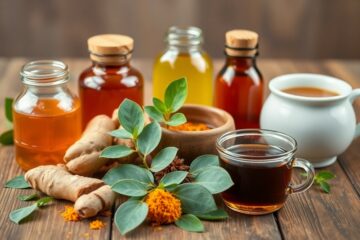Greetings, curious minds! Today, we embark on an enlightening expedition delving into the intriguing world of organic cotton. From the fertile fields where it is carefully cultivated, to the innovative fashion industry that embraces its sustainable qualities, we will trace the intricate journey of this remarkable fiber. Prepare to uncover the environmental impact, the labor practices, and the ethical considerations that accompany the production of organic cotton. Join us as we unravel the intricate tapestry of this fascinating commodity.
Table of Contents
The Cultivation of Organic Cotton
Before delving into the world of fashion, it’s crucial to understand the journey of organic cotton from the farm to the finished product. The cultivation of organic cotton is a significant aspect of the sustainable fashion movement, and it all begins with the farming practices.
Understanding Organic Farming Practices
Cotton is a crop that has been plagued by the excessive use of synthetic fertilizers and pesticides in traditional farming. However, organic farming practices focus on maintaining soil fertility and promoting biological diversity. Organic cotton farming involves the use of natural fertilizers, crop rotation, and biological pest control to ensure the health of the soil and the surrounding ecosystem. By eschewing chemical inputs, organic farmers prioritize the long-term sustainability and health of the land, preserving it for future generations.
Organic farming practices also prioritize the well-being of the farmers and workers involved in the cultivation process. By steering clear of toxic chemicals, organic cotton farming provides a safer and healthier working environment. Additionally, organic farming emphasizes the use of non-GMO seeds, contributing to the preservation of natural biodiversity and promoting resilience in the face of environmental challenges.
Challenges and Solutions in Organic Cotton Farming
On the journey to organic cotton cultivation, farmers often face challenges such as pest infestations and lower yields in the absence of synthetic pesticides and fertilizers. To address these challenges, organic farmers employ innovative solutions such as the cultivation of pest-resistant cotton varieties and the implementation of integrated pest management techniques. These strategies help mitigate pest pressure while maintaining the principles of organic farming.
Organic cotton farming presents a solution to the detrimental environmental and health effects associated with conventional cotton cultivation. By eliminating synthetic chemicals, organic farming reduces water and soil pollution, conserving precious resources and minimizing the environmental impact. Furthermore, the adoption of organic farming practices strengthens the resilience of ecosystems and supports the overall well-being of farming communities.
With a deep understanding of the challenges and solutions in organic cotton farming, we can appreciate the significance of supporting this sustainable agricultural approach. Embracing organic cotton in the world of fashion contributes to a more environmentally friendly and socially responsible industry, promoting a positive impact on both the planet and its inhabitants.
Processing Organic Cotton
Obviously, once organic cotton is harvested, it undergoes a series of processes to transform it from raw fiber into fabric ready for the fashion industry. The processing of organic cotton is crucial to ensure that the end product meets the high standards of sustainability and quality associated with organic textiles.
Cleaning and Preparing Cotton for Spinning
Cleaning and preparing organic cotton for spinning is a meticulous process that involves removing impurities and foreign matter from the raw cotton. This is typically done through a combination of mechanical cleaning and manual sorting to ensure that only the purest fibers are used. After cleaning, the cotton undergoes a carding process, where the fibers are aligned to prepare them for spinning. This step is essential for producing yarn that is consistent in quality and strength.
Once the cotton is cleaned and aligned, it is ready for the spinning and weaving process. This involves the conversion of the raw organic cotton fiber into yarn, followed by weaving the yarn into fabric. The goal is to produce durable, high-quality fabric that meets the standards of organic certification. The entire process requires precision and expertise to ensure that the integrity of the organic cotton is maintained throughout.
Organic Cotton in the Fashion Industry
Unlike conventional cotton, which relies heavily on synthetic pesticides and fertilizers, organic cotton is produced using methods and materials that have a low impact on the environment. With growing awareness about the negative effects of chemical-based agriculture, the fashion industry has been increasingly incorporating organic cotton into its supply chains.
Design and Production of Organic Cotton Apparel
The design and production of organic cotton apparel involves sourcing organic cotton fibers and utilizing sustainable manufacturing processes. Designers focus on creating eco-friendly garments that meet the demands of the consumers for both aesthetics and sustainability. The manufacturing process emphasizes efficient resource utilization and safe working conditions for the workers.
Marketing and Selling Organic Cotton Products
Apparel companies that market and sell organic cotton products focus on communicating the environmental and health benefits of organic cotton. They differentiate their brand by highlighting the sustainable and ethical practices involved in the production of the garments. Retailers strategically position organic cotton apparel to cater to the conscious consumer demographic that values sustainable fashion.
With the rise in demand for sustainable fashion, apparel companies are adopting organic cotton into their collections to attract environmentally conscious consumers, broadening their market reach and contributing to a positive impact on the environment and public health.
Environmental and Social Impacts
Now, let’s delve into the environmental and social impacts of organic cotton farming. Organic cotton production has gained attention in recent years due to its significantly lower environmental impact and the positive social changes it brings to communities.
The Environmental Benefits of Organic Cotton
Environmental benefits of organic cotton farming are substantial. Organic cotton farming eliminates the use of synthetic pesticides and fertilizers, which reduces the risk of water contamination and soil degradation. Additionally, organic cotton farming practices promote biodiversity and crop rotation, contributing to healthier ecosystems and soil fertility. The absence of toxic chemicals also protects the health of farm workers and surrounding communities. Furthermore, organic cotton farming generally utilizes more sustainable practices, such as rainwater harvesting and natural pest control methods, which have minimal impact on the environment.
Improving Livelihoods and Communities Through Organic Cotton Farming
Benefits of organic cotton farming extend beyond environmental considerations. By promoting organic cotton farming, it allows for improved livelihoods for farmers as they are exposed to fewer harmful chemicals. This, in turn, leads to better health outcomes and economic stability within rural communities. Additionally, organic cotton farming often involves fair trade practices, ensuring that farmers receive a fair price for their product and are provided with resources for social development projects.
Environmental and social impacts of organic cotton farming are intricately linked, demonstrating the power of sustainable agriculture in creating positive change for both the planet and its people.
FAQ
Q: What is organic cotton?
A: Organic cotton is cotton that is grown without the use of synthetic pesticides, fertilizers, or genetically modified organisms (GMOs). It is produced using natural methods and materials that have a low impact on the environment.
Q: How is organic cotton different from conventional cotton?
A: Organic cotton and conventional cotton differ in terms of cultivation practices. Organic cotton is grown using sustainable agricultural techniques, while conventional cotton is grown with the use of synthetic chemicals and GMOs that can have harmful effects on the environment and human health.
Q: What are the benefits of choosing organic cotton clothing?
A: Choosing organic cotton clothing helps support sustainable and environmentally friendly practices. It reduces the impact of harmful chemicals on the environment, promotes biodiversity, and protects the health of the farmers and workers involved in the production process.
Q: How is organic cotton certified?
A: Organic cotton is certified by independent organizations according to strict standards. These standards ensure that the cotton is grown, harvested, and processed using organic methods, and that the entire supply chain meets sustainability and ethical criteria.
Q: What is the journey of organic cotton from farm to fashion?
A: The journey of organic cotton starts with organic farming practices, including crop rotation and the use of natural fertilizers. After harvesting, the cotton is processed without the use of harmful chemicals. It is then spun into yarn, woven into fabric, and finally transformed into sustainable and stylish organic cotton clothing for consumers to enjoy.

Our contributing author is a passionate advocate for eco-friendly living and sustainability. With a background in eco-life, they are dedicated to inspiring and empowering individuals to adopt environmentally conscious lifestyles. Through insightful articles, they share practical tips, innovative solutions, and thought-provoking perspectives to promote a greener, more sustainable world. Join them on the journey towards eco-smart living and discover how small choices can make a big impact. 🌱








